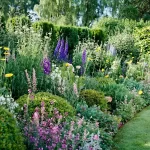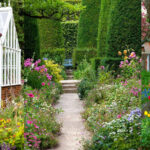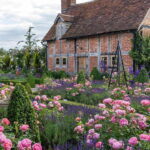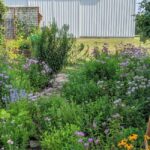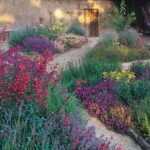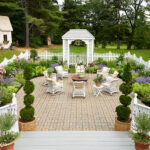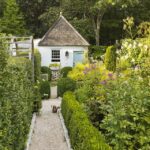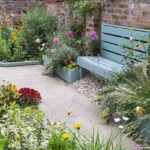Cottage gardens are a beloved style of gardening that traces its roots back to the 15th century in England. These gardens are known for their informal and romantic feel, bursting with a colorful and eclectic mix of flowers, herbs, and vegetables. Unlike more formal garden styles, cottage gardens are designed to look natural and slightly wild, creating a charming and inviting atmosphere.
One of the key features of a cottage garden is its dense planting scheme. Flowers are typically planted closely together, creating a lush and abundant display of color. This creates a relaxed and informal look, mimicking the dense and varied planting of traditional English cottage gardens. In addition to flowers, cottage gardens often include herbs, vegetables, and even fruit trees, making them both beautiful and practical.
Cottage gardens are often characterized by their use of traditional and heirloom plant varieties. Old-fashioned favorites like roses, peonies, delphiniums, and hollyhocks are popular choices for cottage gardeners, as are herbs like lavender, rosemary, and thyme. These plants not only add to the charm of a cottage garden but also attract pollinators and beneficial insects, creating a healthy and biodiverse environment.
Another hallmark of cottage gardens is their informal design. Unlike formal gardens with structured layouts and geometric patterns, cottage gardens are designed to look natural and slightly chaotic. Plants are often arranged in drifts and clusters, with pathways meandering through the garden and hidden nooks and crannies inviting exploration. This creates a sense of whimsy and enchantment that is unique to cottage gardens.
Maintaining a cottage garden requires a slightly different approach than caring for other types of gardens. Because of their dense planting scheme, cottage gardens can require more frequent watering and fertilizing to keep plants healthy and thriving. Regular deadheading and cutting back of spent blooms is also important to encourage continuous flowering and prevent plants from becoming overcrowded. However, the slightly wild and untamed look of a cottage garden means that imperfections and overgrown plants can often add to the charm of the garden.
In conclusion, cottage gardens are a delightful and enchanting style of gardening that captures the romance and beauty of traditional English gardens. With their lush and abundant displays of flowers, informal design, and traditional plant choices, cottage gardens are a popular choice for gardeners looking to create a charming and inviting outdoor space. Whether tucked away in a rural setting or nestled in the heart of a bustling city, a cottage garden is sure to bring joy and beauty to any landscape.

